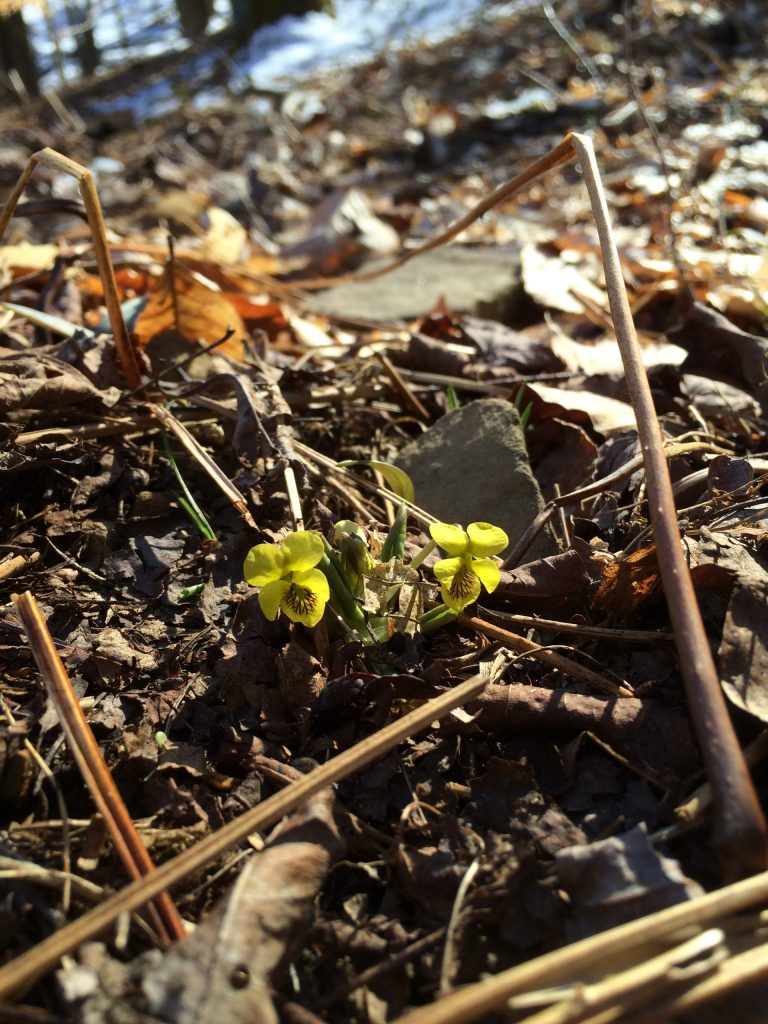At last, warmth! The cold days of January and February are behind us. The days are longer, warmer, and drastically more pleasant. Spring has arrived!
As we all know, spring isn’t just a day on your calendar. It’s the singing of songbirds, budding of trees, greening of grasses, and birthing of offspring. It’s NOT scraping car windshields, turning on the heat, or wearing 2 pairs of socks. (Did I mention I’m more pleasant, too?)
This time of year also brings opportunity. It’s not that the forest has been unkind during the fall and winter months (it did shelter them from winter’s somewhat milder wrath this year), but for the first time since fall deer and other herbivores get the chance to browse some fresh vegetation. Fortunately for the deer, this is also when plants are the most nutritious. Their newly growing shoots are perfect lunchtime fare.
Just as newborn fawns are vulnerable to predators, new plant shoots are vulnerable to herbivory. Plants usually deploy some type of defense against herbivores. While these defenses vary considerably from thorns to bad tasting chemicals, the purpose is the same—don’t get eaten!
This is a good strategy; it costs plants a lot of energy to produce leaves, flowers, and fruits. Early in the growing season, however, new growth—packed full of essential nutrients and proteins—is minimally defended and not yet hardened. This makes it tender, tasty, and nutritious. A great find if you’re a hungry white-tail looking to put on some pounds before your fawn arrives.
Note that not all plants are equal in terms of nutritional quality. Specifically, spring ephemerals like yellow trout-lily, wild leek (or ramp), and Dutchman’s breeches—those plants that complete their entire life cycle before the trees leaf out—contain nearly twice as much nitrogen per unit dry weight compared to other herbs.
Why? Their quick life cycle turns these plants into nutrient and light harvesting machines. They must acquire enough energy to flower, fruit, and store energy for the next growing season in a matter of weeks.
If you’d like to see these guys in action take a look around for blooming wildflowers next time you’re out looking for sheds in early spring. They usually bloom in late April or early May, and are easy to spot because they look out of place against the brown backdrop of the forest floor. (Some pictures provided!)
Of course, with their short growing season, there’s no need to defend against herbivores or anything else for that matter.
Wait, a nutrient-rich, tender, undefended spring ephemeral? Talk about a great place to start grocery shopping after a long, hard winter!
-Danielle Begley-Miller
Ph.D. graduate student
Department of Ecosystem Science and Management
PA Cooperative Fish & Wildlife Research Unit
See if you can find any of these beauties on your next trip into the woods.

Trout Lily fruited in mid-May. Another 2 weeks and it will yellow and dieback for until next spring.

Dutchman’s Breeches (with flowers that look like trousers!) are just one of several spring ephemerals in the state of Pennsylvania.

Carolina spring beauty—another beautiful ephemeral. (Photo credit: Eric Burkhart).

Virginia spring beauty is a very close relative of Carolina spring beauty (see the resemblance?) (Photo credit: Eric Burkhart).

Bloodroot gets its name from red sap that “bleeds” from its stems when they are broken. (Photo credit: Eric Burkhart).
